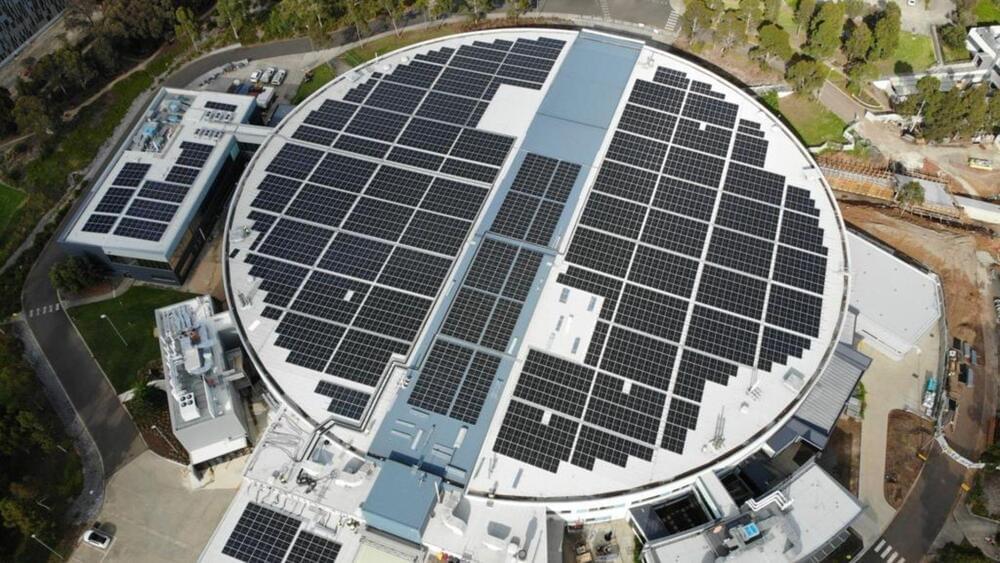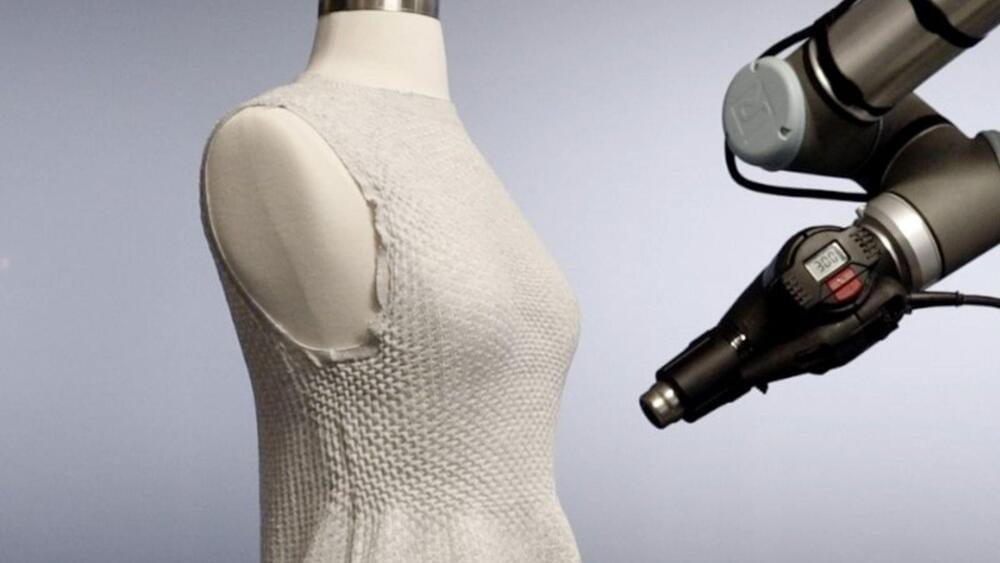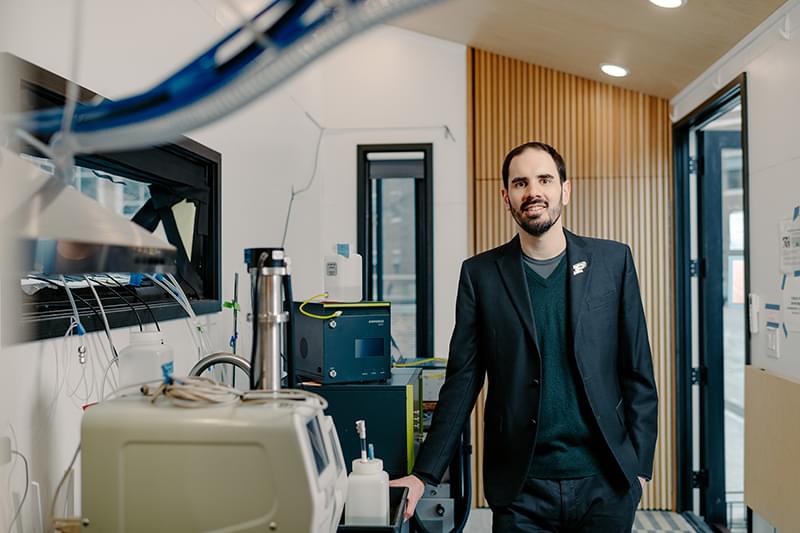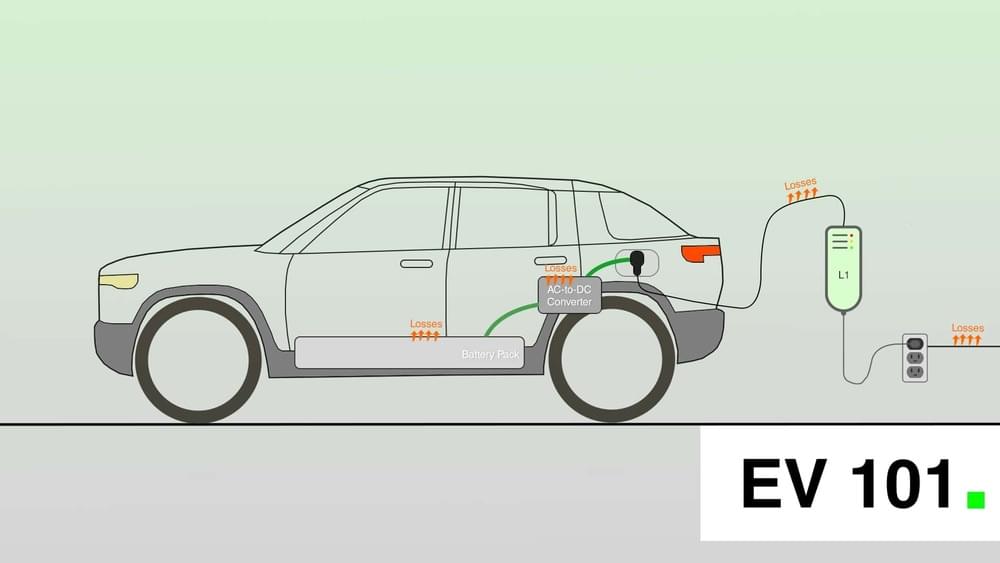Rivian’s 2026-bound R2 goes up against the Tesla Model Y, Hyundai Ioniq 5, Ford Mustang Mach-E, and more. Let’s see how their specs compare.
Archive for the ‘sustainability’ category: Page 67
Mar 10, 2024
Synchrotron nuclear facility saves big with massive solar push
Posted by Gemechu Taye in categories: nuclear energy, particle physics, solar power, sustainability
The Australian Synchrotron, a crown jewel of Australian scientific infrastructure, is making major strides towards sustainable energy independence. The nuclear research facility recently completed the installation of 3,200 solar panels which now blankets the facility’s rooftops. This move is expected to generate substantial savings and support Synchrotron’s world-class research.
The state-of-the-art particle accelerator has now gone green with a 1.59 MW/ 1,668 kWh rooftop solar system. The facility will save about $2 million in energy costs over the next five years.
Mar 10, 2024
MIT’s dress takes sustainable fashion to the next level
Posted by Gemechu Taye in categories: habitats, sustainability
Imagine a dress that doesn’t just fit you perfectly – it morphs along with your style, body, and the shifting trends of the season. It sounds futuristic, but this ‘smart’ garment exists thanks to a collaboration between textile innovators at MIT and a forward-thinking fashion house. It makes sustainable fashion more innovative.
Traditionally, bespoke tailoring—making clothes to a customer’s measurements—was the only way to ensure a perfect fit for one’s body. However, this option was too expensive for most people. A new invention of active fibers and innovative knitting processes is making custom clothing more accessible and eco-friendly.
Mar 10, 2024
Tesla Is Working On A NACS-To-NACS Extension Cable
Posted by Shailesh Prasad in categories: sustainability, transportation
Tesla hopes that more EVs will have the charging inlet in a similar location as Tesla EVs: “Additionally, we encourage all vehicle manufacturers to standardize charge port locations to the rear driver side or front passenger side.” But there are no signs that other OEMs will do that, because many of them have different ideas about the charging port location.
Because of that, Tesla is working on an additional solution—an extension cable (NACS to NACS). According to the manufacturer’s FAQ page, it will be available for purchase in the future.
Mar 10, 2024
Tesla just hit a major milestone with its Supercharger network — here’s what it means for drivers
Posted by Genevieve Klien in categories: sustainability, transportation
In September, Tesla announced it had delivered 50,000 Superchargers worldwide, bringing greater access to rapid refueling for its electric vehicle customers.
The company is showing no signs of slowing down, as January heralded the arrival of the 55,000th fast-charging point.
Mar 10, 2024
Researchers make breakthrough in solar technology with ‘stretchable’ panels that act like rubber — here’s why it’s significant
Posted by Genevieve Klien in categories: solar power, sustainability, wearables
An innovative, flexible solar cell being developed in South Korea has passed a crucial stress test.
Researchers from the Korea Advanced Institute of Science & Technology (KAIST) are working on a rubber-like sun-catcher made from organic materials. The idea is for these elastic cells to one day help power the wearable technology that is becoming more prevalent in society, per a KAIST research report.
“Through this research, we not only developed the world’s best performing stretchable organic solar cell, but it is also significant that we developed a new polymer that can be applicable as a base material for various electronic devices that needs to be malleable and/or elastic,” study lead Professor Bumjoon Kim said in the summary.
Mar 10, 2024
You may be Breathing in More Tiny Nanoparticles from Your Gas Stove than from Car Exhaust
Posted by Natalie Chan in categories: engineering, nanotechnology, sustainability, transportation
Gas stoves emit nanocluster aerosol that may get deep into your respiratory system, study shows. Cooking on your gas stove can emit more nano-sized particles into the air than vehicles that run on gas or diesel, possibly increasing your risk of developing asthma or other respiratory illnesses, a new Purdue University study has found.
Combustion remains a source of air pollution across the world, both indoors and outdoors. We found that cooking on your gas stove produces large amounts of small nanoparticles that get into your respiratory system and deposit efficiently, said Brandon Boor, an associate professor in Purdue’s Lyles School of Civil Engineering, who led this research.
Based on these findings, the researchers would encourage turning on a kitchen exhaust fan while cooking on a gas stove.
Mar 9, 2024
Doing the impossible: harvesting solar power from space
Posted by Genevieve Klien in categories: solar power, space, sustainability
Isaac Asimov’s idea of harvesting solar power from space may not be a thing of fiction much longer as space agencies explore the concept.
Mar 9, 2024
This new Mack MD Electric is a mobile EV charging station
Posted by Shailesh Prasad in categories: energy, sustainability, transportation
The benefits of fleet electrification are well-known, but the question of feasibility is still very real in the minds of many heavy fleet managers. To help fleets understand how electric trucks can fit into their operations, Mack Trucks is offering a mobile off-grid charging system.
Mack made the announcement earlier this week at the American Trucking Associations Technology and Maintenance Council Annual Meeting, where they showed off renderings of a Mack MD Electric carrying a “renewable propane” powered generator and 120 kW charger. While somewhat clunky as a concept, it should do a reasonable enough job of pretending to be permanent infrastructure to give a fleet manager a sense of whether or not an electric solution will work for them.
“This system will allow the customer or dealer to charge trucks – whether it’s a demo unit or a multi-unit ride-and-drive event at the dealer – without having charging infrastructure readily available at their site,” says Ryan Saba, energy solutions manager for Mack Trucks. “Mack hopes that this option will help customers more easily experience the benefits of e-mobility and a more sustainable transportation option.”
Mar 9, 2024
How Efficient Is Each Type Of EV Charger?
Posted by Shailesh Prasad in categories: sustainability, transportation
Things are different when you charge your EV from a Level 3 DC fast charger, as there is no need to convert the current from AC. Data to verify how much lower losses are when DC fast-charging isn’t readily available, but they should be about 10 percent.
Our own Tom Moloughney calculated DC fast-charging losses while topping up his Tesla Model 3 a few years back from an Electrify America station and using a CHAdeMO to NACS adapter. He charged the Model 3 from a 7 percent state of charge to 57 percent, which put about 35.5 kWh back into its battery pack, and he calculated that about 3.5 kWh of that were losses. He estimated that had he charged from flat to full, total losses would have been around 7 kWh, or about 10 percent of the vehicle’s usable battery capacity at the time.
If the fast charger in question is designed to run at 800 volts and it charges an 800-volt EV, then losses should be lower, although this needs to be tested and verified before actual loss numbers are presented.


















